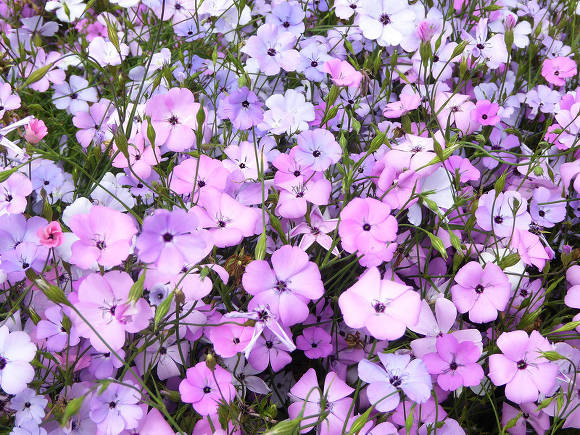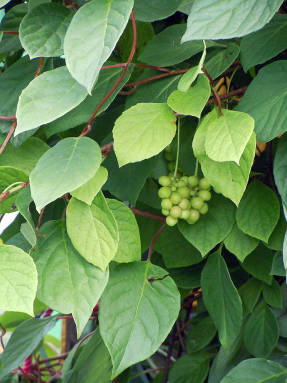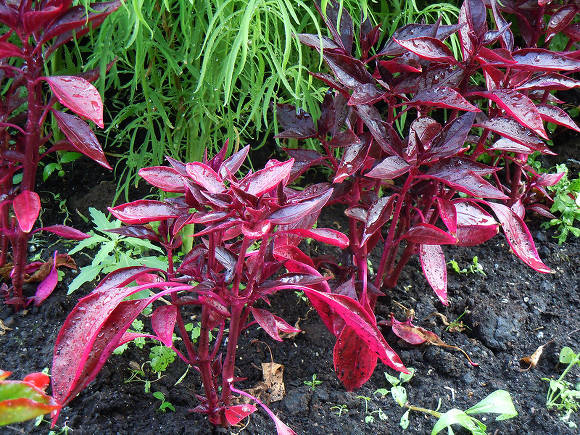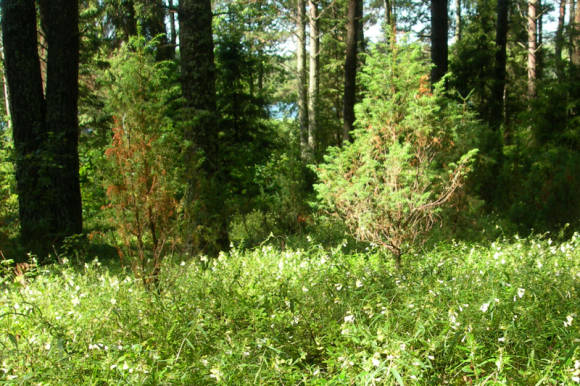Creating a spectacular herbaceous perennial flower garden in the shade is not an easy task. After all, one has to take into account not only the biological and ecological characteristics of shade-tolerant plants, but also different lighting conditions. The degree of shading depends on the density and closeness of the crowns of trees and shrubs, the height of the house and outbuildings, that is, the shadow is different - thick, light, partial shade.

A dense, dense shade, as a rule, is given by conifers (spruce, fir) and some deciduous species (maple, oak), and it also forms under the canopy of old fruit trees (especially apple trees) and bushes, for example, irgi, hawthorn, hazel, and , in addition, on the north side of the house and various buildings [3]. Few plants can endure such difficult conditions. Among them are various ferns, kupena, brunners - large-leaved and Siberian, geraniums - red-brown and blood-red, Colchis epimedium, or Colchis mountain weasel, hoof, hellebore, common wolf, primroses, corydalis, small periwinkle, creeping tenacious, tiarellah. Skillfully using these herbaceous perennials, you can create an interesting flower garden even in dense, dense shade.
 |  |
Brighter and more attractive expositions are obtained in partial shade, which is formed from the western and eastern sides of buildings and along the edges [3]. Such habitats are optimal, perhaps, for the vast majority of decorative leafy and flowering plants. Among them are anemone, astilba, astrantia, badan, loosestrife, volzhanka, dicentra, doronicum, irises, bells, meadowsweet, daylilies, decorative bows, violets, peonies, lilies, primroses, hosts, lupine, spurge, phlox, etc.
 |  |  |
A light shadow is formed under the canopy of trees and shrubs with an openwork crown (plum, sea buckthorn, cherry, mountain ash, etc.) [3]. These conditions are great for species such as the spring navel (Omphalodes verna), daylily, fragrant woodruff (Asperulaodorata), lupine, lily of the valley, black cohosh, lungwort, bulbous plants (daffodils, snowdrops). Pine also gives a light shade - individual specimens or a sparse forest. Typically, this tree grows in sandy, nitrate-poor soils. Therefore, planting ranches and lupines here will not only increase the decorativeness of the site, but also enhance the growth and development of pine, due to the ability of plants to fix nitrogen and increase nitrogen and phosphorus in the soil.
In forest areas with a predominance of deciduous species, the variability of the light regime is of great importance. Here, every year, the course of the growing season is replaced by two periods of different illumination [5]. The first happens in early spring, when the leaves of trees and shrubs have not yet blossomed and do not impede the penetration of sunlight. At this time, in such places, light-loving, moisture-loving and cold-resistant plants feel good - ephemeroids (woodleaf, anemone, corydalis, etc.), which form spectacular bright spots. But their growing season passes very quickly, so when the tree species are covered with dense foliage, the colorful carpets of early spring species disappear. Aerial shoots die off, and rhizomes, bulbs, tubers remain in the soil, in which a supply of nutrients has already been accumulated. But by this time, shade-loving herbaceous perennials planted on the site become decorative.
 |  |
In addition to the light mode - one of the main principles for selecting an assortment, there are other equally important factors that must also be taken into account when creating a flower garden in the shade. These are the microclimate of the site, the degree of soil moisture, the presence of forest litter. Of particular importance is the substrate that provides the plants with water and nutrients.
For normal growth and development of most shaded perennials, loose, fertile, humus-rich, usually well-structured soils are required. To improve heavy clay soil, sand, peat, humus are added.On such well-moistened soils, hellebores, snowdrops, kupins, ozhiki, arizema, volzhanki, astilbe, hosts, black cohosh can grow.


Loose sandy soils, poor in humus, dry out quickly. They are "ennobled" by bringing in peat, humus, necessarily adding complex mineral fertilizers. Among the shade-tolerant plants, there are species (although there are very few of them) that prefer poor sandy soil. These are some stonecrops, lily of the valley May (Convallariamajalis), narrow-leaved lungwort (Pulmonariaangustifolia) [3].
If the site is located under the canopy of trees, then a significant amount of organic matter enters the soil from decomposed litter. The latter has a reaction close to neutral, which is favorable for the growth and development of most shade-tolerant plants. But in general, almost all of them grow well on soils, the acidity of which varies widely from slightly acidic to alkaline. True, there are species that prefer alkaline soils, for example, periwinkle, Colchis epimedium [3].
 |  |
Adequate moisture, especially in spring, is the most important prerequisite for a good shade ground cover. Most shade-tolerant and shade-loving plants are mesophytes, that is, they need a normally moist soil and high air humidity, as a rule, they do not tolerate drought well [3]. There are species with a particularly high demand for water, the so-called hygrophytes. These include astilba, primrose, butterbur, meadowsweet, hosta, Manchurian saxifrage. In hot dry weather, they droop, the leaves lose their turgor. But among the shade-tolerant plants there are also xerophytes - species that tolerate drought well, for example, horny goat weed, periwinkle, forest anemone, kupeni, geraniums, stonecrops. As a rule, these are plants with dense, thick leaves, often pubescent or covered with a waxy bloom. They can even be planted near tree trunks.
In addition, it should be remembered that during rain, water partially remains on the trunks, branches, leaves of trees, as well as on the surface of other plants, from where it evaporates without entering the soil. For example, the spruce canopy retains more water than the pine canopy due to its dense branching and better coverage [5]. Therefore, during the growing season, it is necessary to carefully monitor the soil moisture and, if necessary, water the plants. Hygrophytes need constant moisture, mesophytes need moderate moisture.
Any gardener wants an interesting and attractive flower garden in the shade. This can be achieved only by the correct selection and placement of plants, as well as competent care, which requires a lot of work, diligence and great patience, but the result is worth it!

Literature
1. T.K. Goryshina "Plant ecology". - M .: Higher school, 1979 .-- 368 p.
2. Zelikov V.D. "Soil Science with the Basics of Geology". - M .: Publishing house MGUL, 2002 .-- 220 p.
3. Karpisonova R.A. "A flower garden in the shade." - M .: Publishing house "Kladez-Buks", 2005. - 143 p.
4. Karpisonova R.A. "Color and terms of decorativeness of perennials". - M .: JSC "Fiton +", 2010. - 112 p.
5. Shennikov A.P. "Introduction to Geobotany". - St. Petersburg: Publishing house of the Leningrad University, 1964 .-- 447 p.
Photo by the author
The magazine "Floriculture", No. 5, 2012







